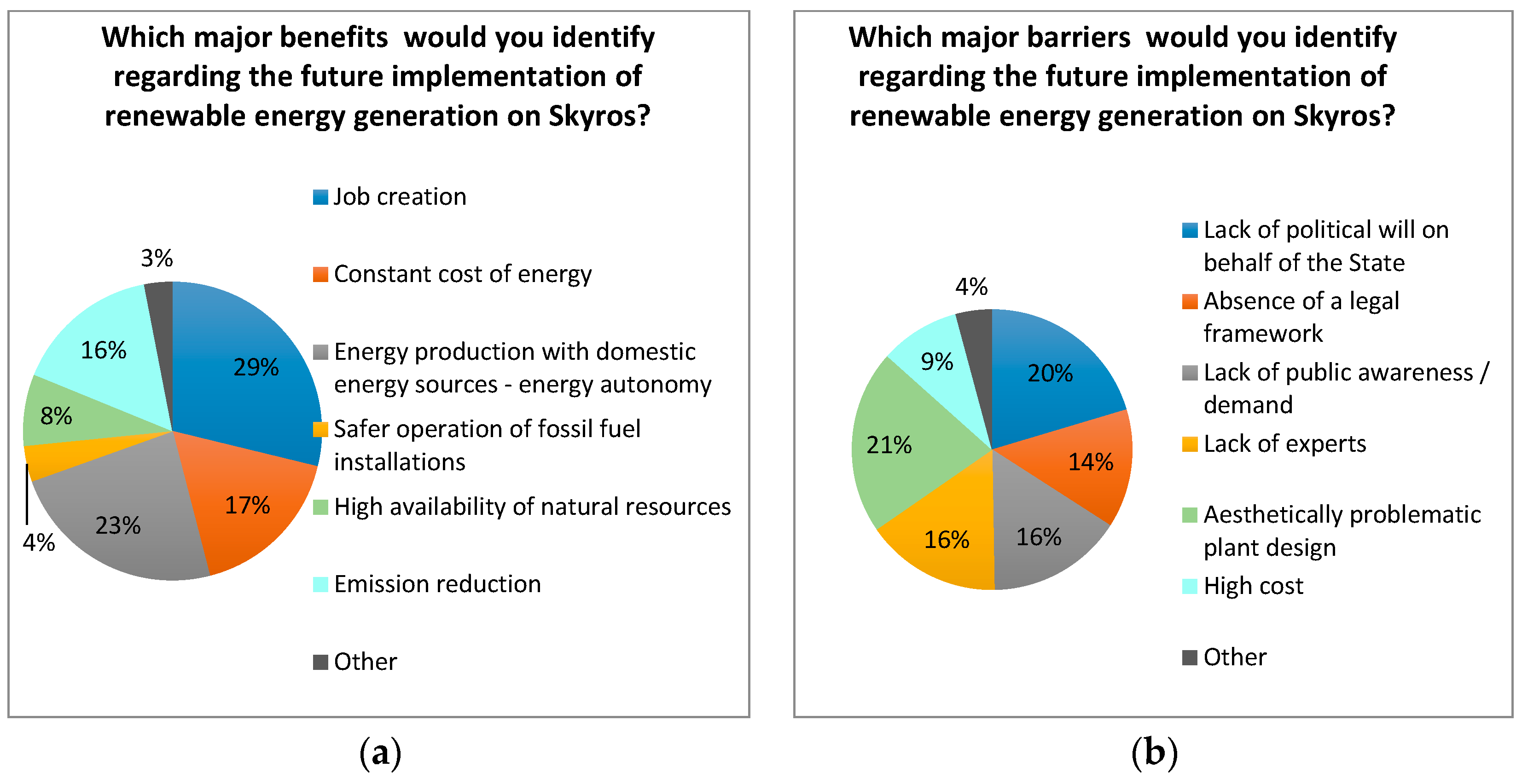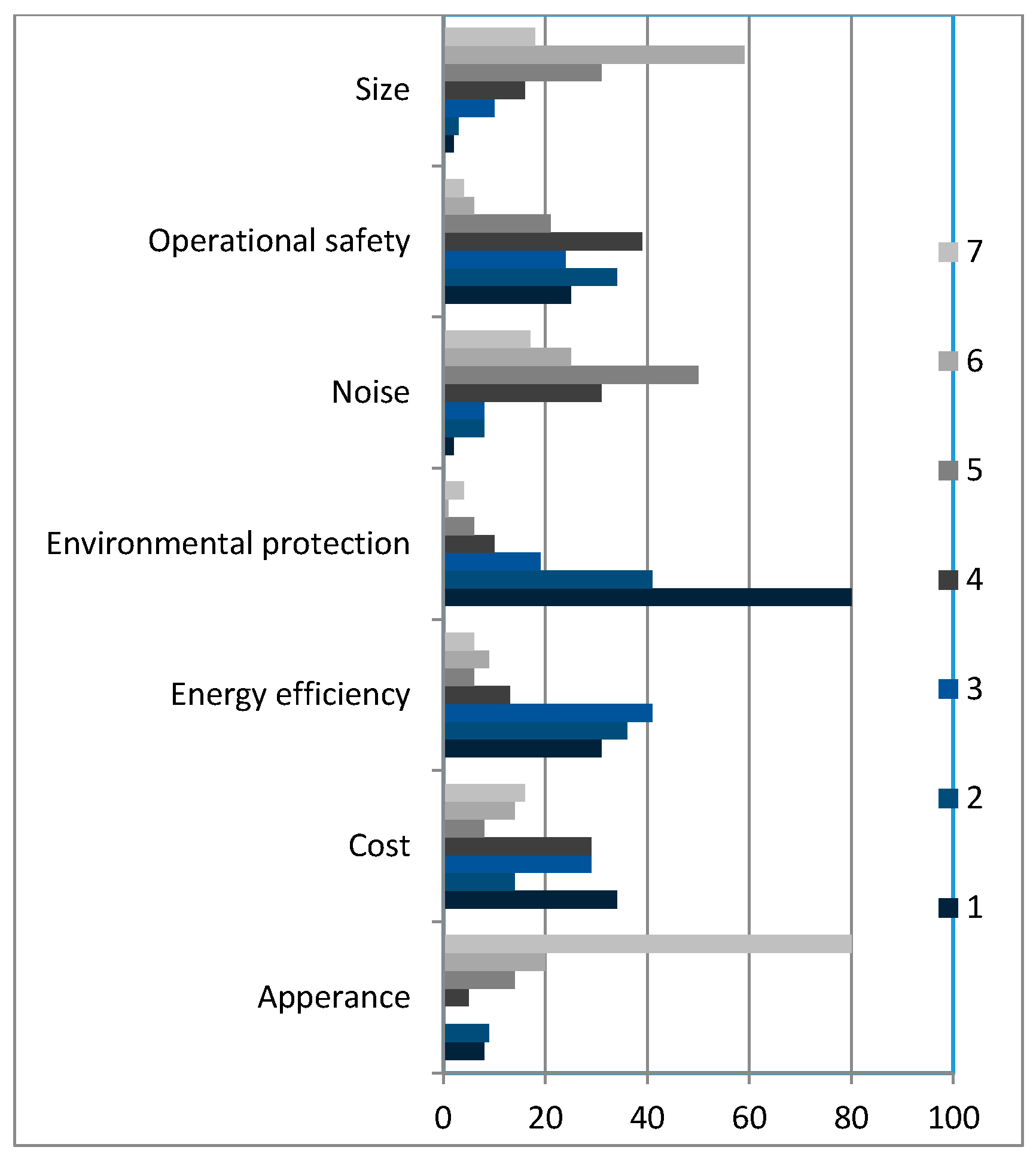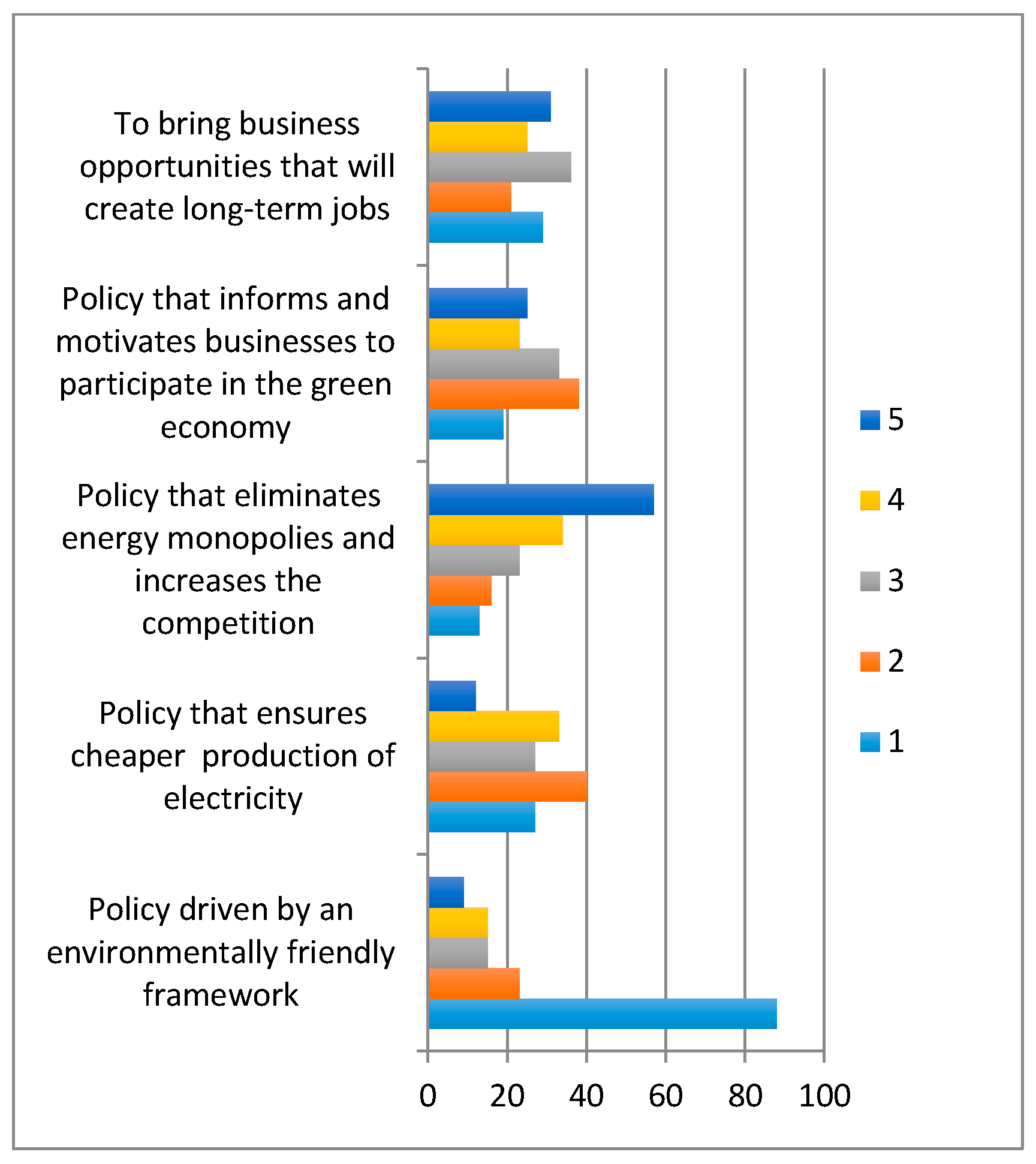1. Introduction
Energy self-reliant communities not connected to central electrical grids, such as remote islands, rely on autonomous local grids, commonly based on fossil fuel combustion. It is thus apparent that the energy autonomy of remote regions is not a new concept. However, energy autonomy exclusively based on renewable energy sources (RES) is a developing idea that can result in a number of benefits [
1]. Apart from boosting the local, and as a consequence the national, economy by creating jobs and increasing the penetration of RES in the national portfolio, renewable-based energy autonomy can decrease the environmental impact and economic expenditure of energy generation in remote regions [
2,
3]. Envisioned energy strategies must be based on social, political, environmental and economic considerations [
4].
Non-interconnected islands constitute a good example of off-grid energy generation systems with relatively isolated communities. Energy generation on such islands is usually associated with high cost and environmentally harmful energy resources [
5,
6]. Greece has several hundreds of inhabited islands located in the Aegean and Ionian Seas, 58 of which are yet to be connected to the central electrical grid of the mainland. The majority of these islands generate the required electricity and thermal energy using heavy oils transported to the islands from central stations of the mainland [
7]. The result of this process is a considerably high cost of fuel that translates to a significantly high cost of electricity. In order for the electricity to be available at a similar cost nationwide, the added cost of fuel utilized on non-interconnected islands is subsidized. The total expenditure to subsidize the cost of electricity in Greece just for 2013 was approximately 800 million Euros [
8]. In addition to this substantial amount, the combustion of heavy oils is associated with significant greenhouse gas emissions. This environmental impact is further increased with the transport of the fuel from central stations to the location of the power plant on the island.
In recent years, several regions connected to central grids have achieved renewable-based energy self-sufficiency [
9,
10,
11,
12]. On the other hand, only a few examples of non-interconnected regions that orientate themselves toward such an energy independence exist [
13]. This is the case because the practical conditions under which energy autonomy is achieved in non-interconnected areas are quite more challenging.
To achieve the goal of renewable-based energy autonomy, three key factors must coexist: social awareness, political responsibility and economic viability. It has been shown that renewable-based projects are more likely to be economically viable in remote regions [
2]. Public awareness and acceptance is a very important factor when the implementation of new policies is required in a society. Specifically, social awareness can induce the active participation of the public in the reduction of energy consumption and the promotion of new technologies that can lead to more sustainable living. In addition, only with the implementation of the right policies can societies react to challenges and adapt to changes in a satisfactory manner.
The opinion on and social acceptability of energy systems and technologies may strongly influence the time needed to complete an energy project [
14]. An IEA (International Energy Agency) study on policy considerations for deploying renewables [
15] provides specific examples of wind projects that were either significantly delayed or canceled altogether due to strong public opposition. In addition, this is even the case given that wind power has been identified with the most favorable social impacts when compared to other technologies [
16]. A social study on the acceptance of renewable energy sources realized in Malaysia showed that the local population related renewable energy with a high level of effort [
17]. This created a negative attitude toward the use of renewable energy technologies. The paper concluded that there is a need to pay more attention to the role of public perception and awareness in the successes and failures of renewable energy policy. The estimation of the willingness to pay for renewable energy differs from region to region [
18,
19,
20]. Bauwens confirms that the activation of social norms can be a promising mechanism to activate investment in renewable energy [
21].
This work presents results of the European project GENERGIS (Green Energy for Islands) [
22]. The goals of the project were to: (1) address the energy autonomy of an island, including energy storage systems; (2) involve the people of the community in the decision-making process; (3) perform detailed technical calculations through simulations, as well as exhaustive economic and environmental analyses; (4) propose a concrete energy plan for 100% renewable energy autonomy; and (5) create the first guide on sustainable development based on social, environmental and economic data. Overall, this work dealt with the outlook of establishing a renewable-energy based “energy island” not connected to a central electricity network. In more general terms, an “energy island” does not necessarily need to be an island geographically. Such energy islands will most likely be piloted in the future in several countries in an effort to develop a more decentralized network, and also in developing countries or locations where it may not be practical to build a centralized network.
This article discusses outcomes of a survey in an effort to engage the public and incorporate its views in the decision-making process, by coupling social perspectives with engineering decisions and practices. Although these are areas strongly interdependent in real life, their connection is often disregarded in practice. Incomplete assessments of energy projects may lead to cease of actions and social conflicts. The goal here is to address this reality and reveal key motivating or discouraging factors within the population of a remote region when it comes to energy projects. The survey evaluates the social awareness and opinions (social perception) of the general public of the island of Skyros in Greece. To compensate the high cost of fuel used in 2013 in the local thermal plant of Skyros alone, the Greek state paid subsidies of more than five million euro [
8]. Accounting for this considerable cost and the great potential of the country in renewable resources, it seems that appropriate energy policies could make a significant contribution to the economic recovery of the country overall. Voicing the preferences and expressed requirements of people may lead to policy improvements and better implementation of environmentally friendly technologies.
2. Methodology
The social-related activities realized in GENERGIS included two parts: first, a questionnaire and, second, personal contact with community members for further clarifications and information exchange. This study was realized for the Greek island of Skyros. Skyros, with a population of 2994 inhabitants (census of 2011) and a surface area of 207 km
2 [
23].
The questionnaire was used as a tool to collect information about the people directly from the people, while it also gave the participants the opportunity to obtain further information on energy issues, when wished. The participants were selected at random. Specifically, the survey revealed the preferences, suggestions, expectations and willingness of the people to support sustainable development based on RES applications. It also identified the knowledge level of the people on energy issues, by revealing public awareness about renewable energy technologies and their perception of energy costs and current energy policies. Lastly, it helped extract specific opinions of the general public concerning climate change and sustainable development, including opinions on energy topics and preferences, willingness to increase their economic burden to help the use of RES, positions on ownership rights and suggestions on the organization and realization of the project.
At the beginning of the realization of the survey, the inhabitants of the island confronted the survey in a conservative manner and appeared rather skeptical toward its serving purpose. Perceived negative reactions toward the idea of renewable energy and sustainability were traced to a large-scale wind turbine project proposed to be built on the south side of the island, on land declared national heritage. The scale of the proposed project (333 ΜW) caused strong objections among the inhabitants of the island that have managed to put the project on hold since 2005. This created a lack of trust of the people on RES projects in general, something that made the realization of the questionnaire more complex.
To better reveal the subjective state of mind of the people questioned, one-to-one discussions were planned and realized. The majority of the people were willing to discuss and cooperate on topics concerning the environment and the improvement of their community. The social interactions included one-to-one meetings with residents of the island (chosen at random), as well as with representatives from local authorities (e.g., the Citizen Union of Skyros and the Municipality of Skyros) and the local public energy provider (i.e., the Public Power Corporation S.A., PPC, Hellas). The content of the meetings was pre-structured by the interviewer and followed the content of the questionnaire closely. The duration of the meetings was between 30 min to approximately 1 h, depending on the extent of answers of the interviewees. The purpose of these meetings was threefold: first, to present the project, its goals and structure; second, to provide information on energy conversion strategies and policies when wished; and, third, to collect more data and opinions on energy issues and projects that the community was or had been previously involved in.
3. Results and Discussion
A total of 183 questionnaires were completed during the realization of this survey. This number represented about 6% of the island’s population. The data of the survey were digitized, i.e., imported to a spreadsheet and processed for graphical representation, and later linked to the website of GENERGIS [
22]. In addition, a database of 33 people interested in receiving further information about the project and its results was created.
The participants of the survey covered a wide age range, were relatively balanced between the two genders and included a variety of educational levels and professions. As seen in
Table 1, the participation of men and women was comparable, while the population included participants of various professions and of different educational backgrounds. The interviewed were people of various ages, in their majority between 25 and 34 years old. Seventy-seven of the people lived on the island permanently, 11% resided on the island from a few weeks to several months every year and 7.7% resided on the island for approximately six months per year. It is thus seen that the chosen participants constituted a reasonably representative sample of the population.
It was seen that most people were positive toward renewable energy sources and believed that their wider use can reduce the environmental impact of conventional fuels. Further analysis suggested high levels of awareness on energy consumption measures that can result in environmental benefits. Most people believe that environmental protection is by far the most important criterion when evaluating an energy technology. Secondary criteria were the economic expenditure and the energy efficiency of an energy technology. High levels of awareness were seen when it came to technologies widely used in the country and, specifically, on the island (such as solar heaters), but less so when it came to technologies still relatively unknown to the local society (wave energy, fuel cells, and more). At the same time, people tended to be more open to new installations of solar, wind and geothermal energy, while they directly rejected nuclear power and coal plants.
As seen in
Figure 1a, the main benefit identified by the respondents regarding the future implementation of renewable energy generation on Skyros was the creation of jobs. The advantage of generating energy with domestic energy sources was identified as the second most important advantage of using local renewable energy sources. The cost of energy and the associated emission reduction were the two subsequent benefits singled out by the participants.
The major barriers of renewable energy penetration and implementation recognized by the island inhabitants were first an aesthetically problematic plant design, followed by the lack of political will of the state, the lack of public awareness and of experts and the absence of a legal framework (
Figure 1b). This ranking is quite particular and may not directly apply to other remote communities. The economic growth of islands depends significantly on the attraction of tourists. For this reason, the inhabitants of islands struggle to maintain the natural beauty of their land and value aesthetics highly. Thus, aesthetically acceptable designs of energy generation plants on islands are important. Nevertheless, when asked to rank the importance of seven operational criteria when accessing renewable energy applications, power plant appearance was ranked as the least important (
Figure 2). About 44% of the people interviewed placed environmental protection as the most important characteristic of such plants, while 18.6% placed cost as the most important criterion and 17% noted energy efficiency. These were followed by operational safety (13.7%) and, lastly, the appearance of the technology (4.4%). The size and the noise of the structures had secondary importance for the respondents. We see thus that although renewable energy designs must be improved aesthetically to facilitate social acceptance, environmental protection and efficiency are given priority when the operational characteristics of the plants are considered.
When asked about the type of policy the people expect from their leaders, policy driven by an environmentally friendly framework was recognized as by far the most important characteristic (
Figure 3). Secondary importance was given to policies that ensure cheaper electricity generation and business motivation toward a green economy. Policy that generates opportunities for long-term jobs was placed third by the majority of the survey respondents, while policy that eliminates monopolies and increases competition was placed last. In total, 40% of the people interviewed believe that the energy policy of Skyros should change slightly, while 30% believe it should change completely (
Figure 4a). It should be mentioned that during the realization of the survey, it became clear that some participants initially mistakenly thought that the questionnaire was being carried out on behalf of the government and/or the private sector. Nevertheless, the reason for the survey and its academic nature were mentioned when handing out the survey and written explicitly on the cover of the questionnaire.
Lastly, as seen in
Figure 4b, the majority of the participants believe that renewable energy is a good future personal investment. Specifically, 33% of the people believe that renewable energy is definitely a good personal investment for the future and 30% believe that it is probably a good investment. The percentage of people that believe that it is probably or definitely not a good investment added up to 21%. It should be noted that the question did not make a distinction among different types of renewable energies or between large- and small-scale plants. However, it was followed by an open question, asking the interviewees to justify their previous answer. Ninety-six percent of the justifications received show that people referred to plants of a relatively larger scale suitable to the needs of the island. Four percent of the interviewees specifically mentioned that they would support wind and solar energy projects.
4. Conclusions
The realization of the survey and the interaction with the general public revealed important areas that need to be improved in the policy and social sectors. From the results of this work, it became apparent that the people of the island expect more transparency when it comes to actions that affect their way of living. Overall, they are not fully satisfied by the current situation of energy policy (40% and 30% want slight and radical changes in energy policies, respectively) and they hold back when asked to speak their mind. Most participants want better legislation and more transparent processes that can boost regional progress and encourage prosperity.
Overall, the people of the island are supportive of the use of renewable energy sources as a technology that can lead to sustainable development. Thus, projects involving renewable sources considered fair both to the environment and their living standards are supported by the majority of people. Most of the people interviewed support the construction of energy conversion systems based on renewable energy sources on their island with one condition: that their scale is sufficient to cover the energy needs of the island only. Large-scale projects, such as the wind farms planned to be built on the island, are actively opposed by most of the islanders. Furthermore, such projects cause suspicion and skepticism among the inhabitants of the island that consequently lose their confidence in their government. Due to past events and also due to somewhat reduced social awareness, a large number of people were ready to dismiss any project that included the term renewable energy. There was thus a clear indication of the lack of trust of the people in their local leaders.
The results of the questionnaire and the social interactions realized for this work suggest that social awareness is a key feature that can play a very significant role in the policy-making of a community. It may be difficult to generalize the results of the present study to fit other communities because each case is unique and governed by different characteristics and social aspects. For example, two non-interconnected islands may present completely different indicators of social awareness or renewable energy availability. Furthermore, the differences may further increase with more regional isolation of the community. Nevertheless, this work can be used as an indicator of the social perspective on remote regions with similar characteristics (e.g., size, social awareness, touristic development, etc.). In the case study presented, it is evident that social awareness can be strengthened. This can be realized with activities supported by the local government that are intended to inform and further educate the general public. Knowledge can create new communication channels and facilitate fruitful interactions with the general public.









